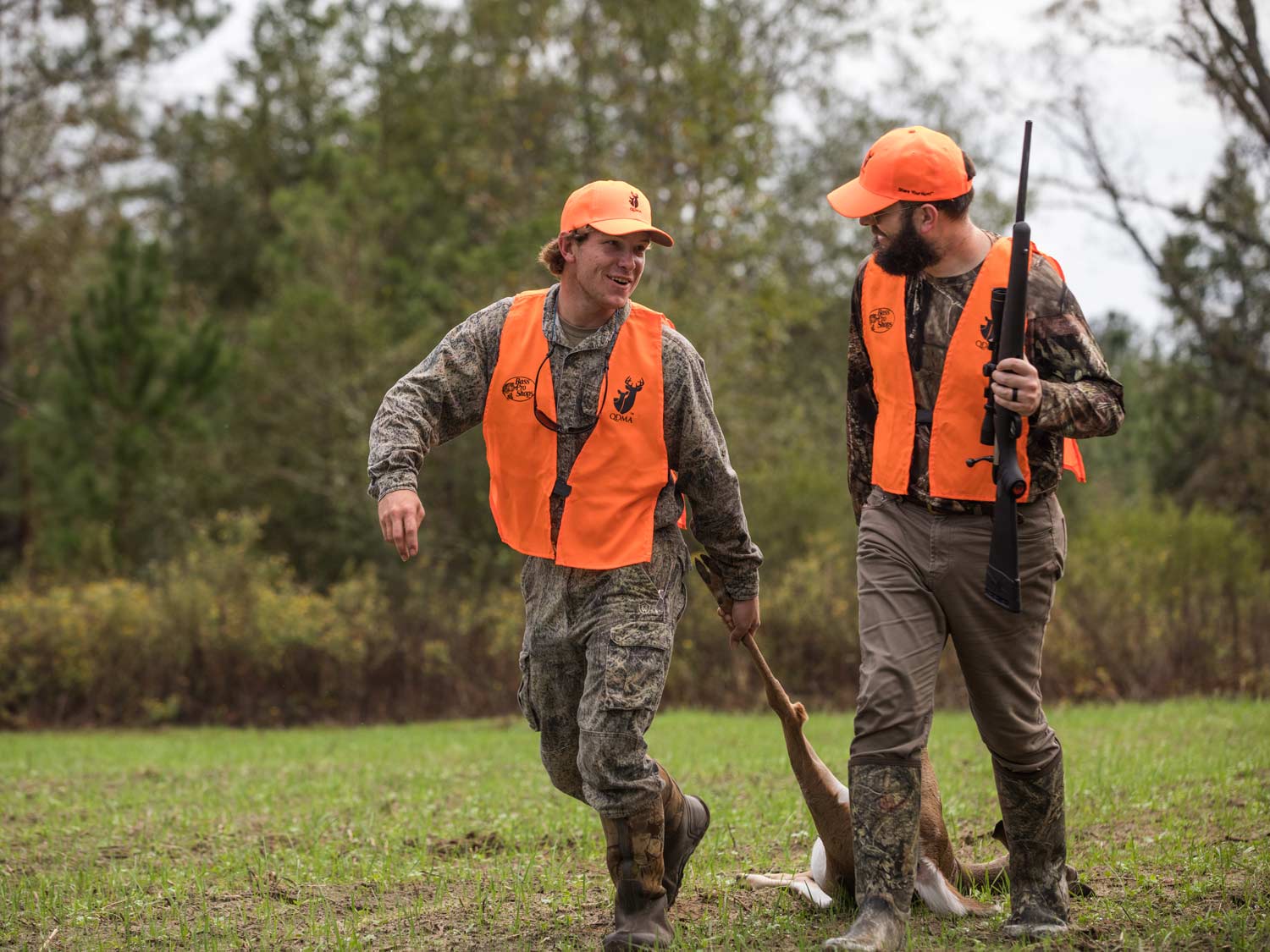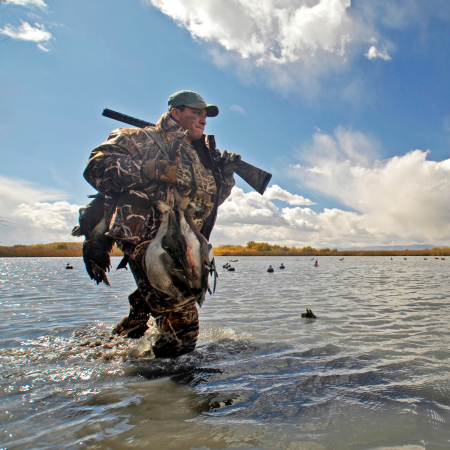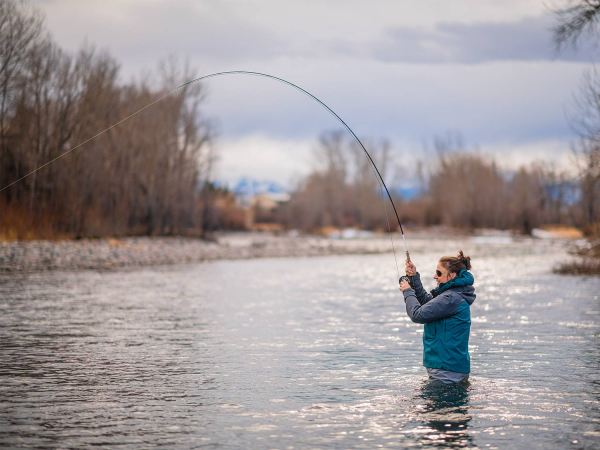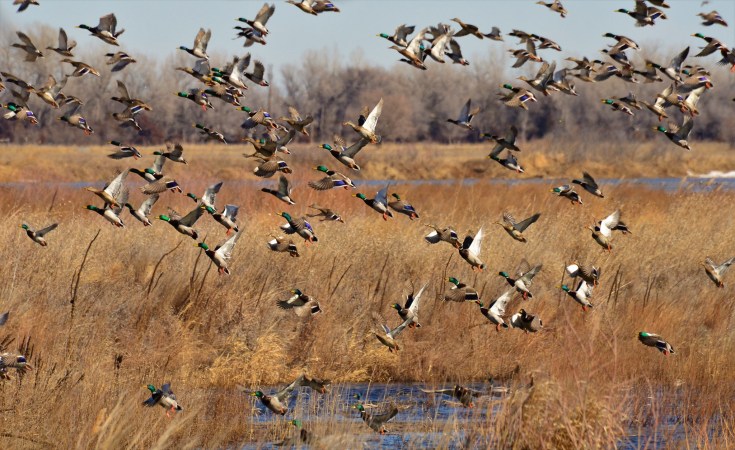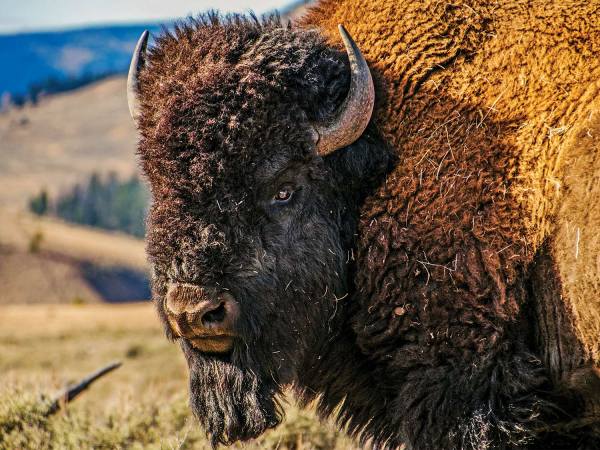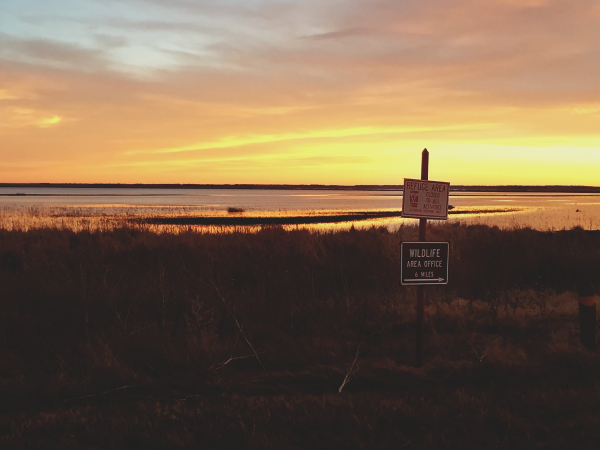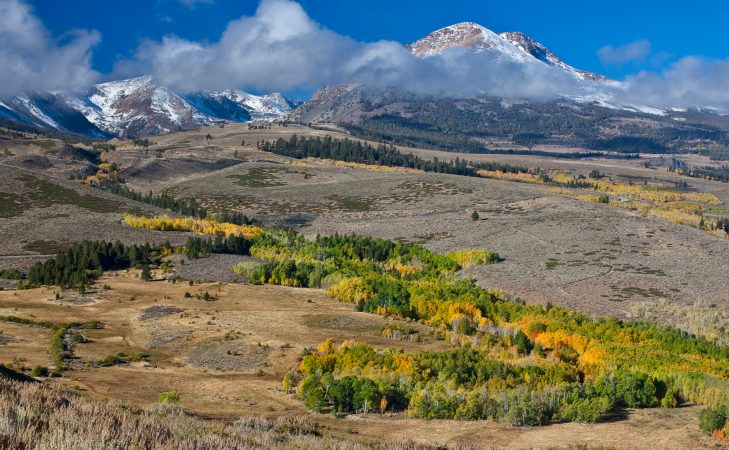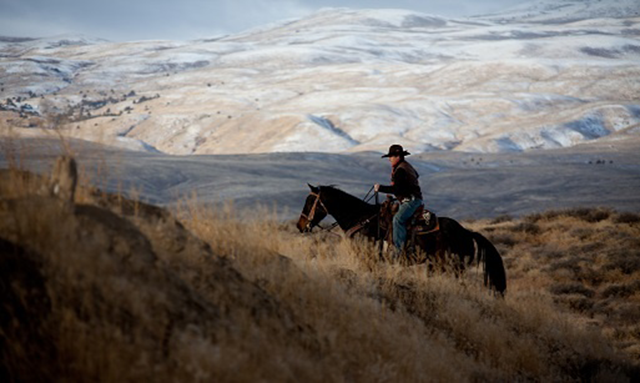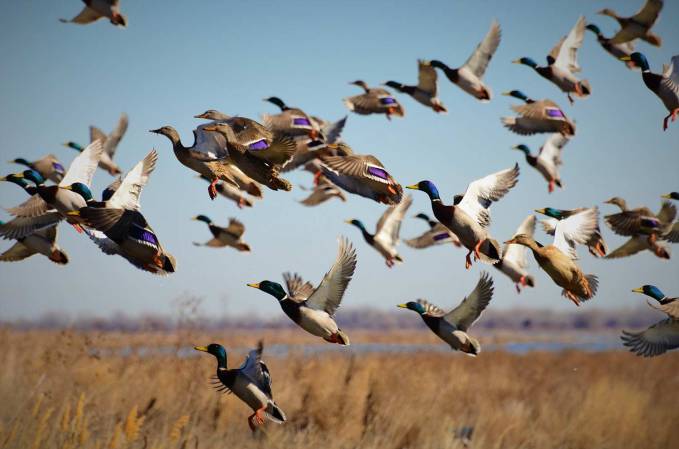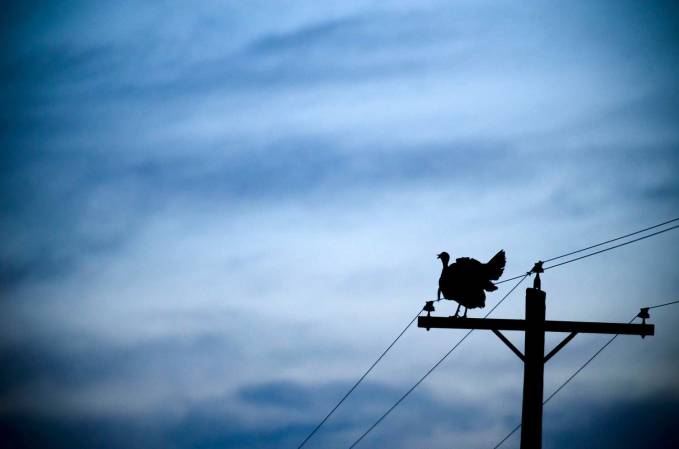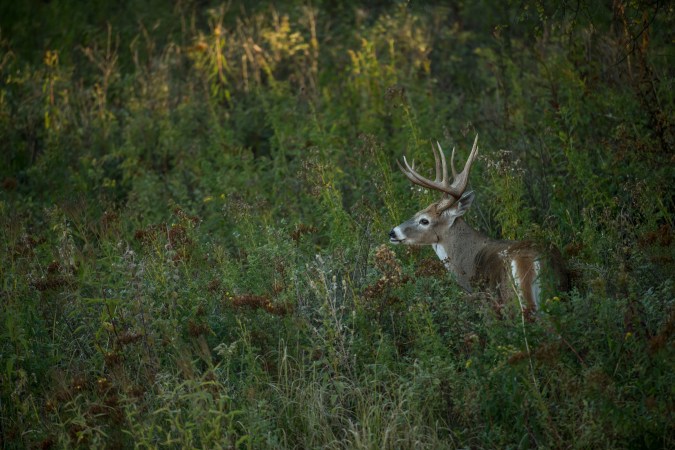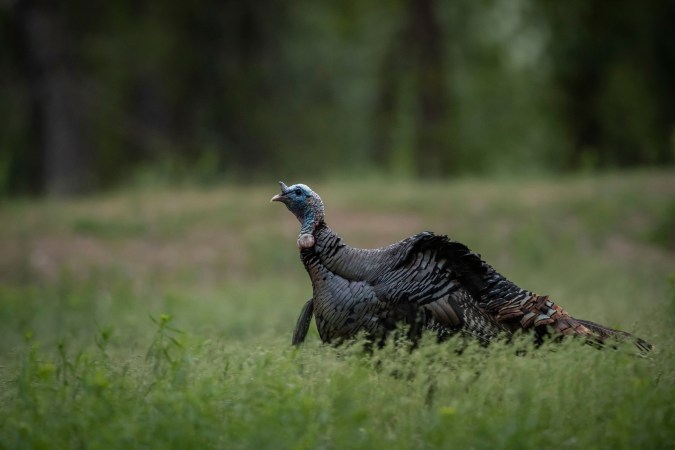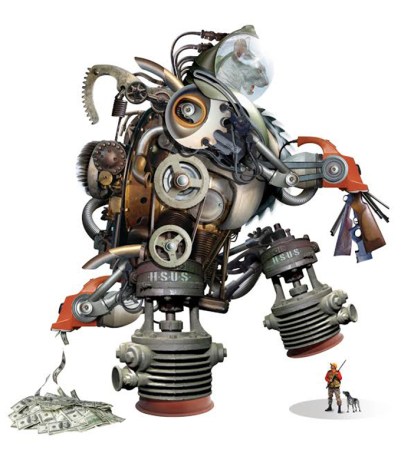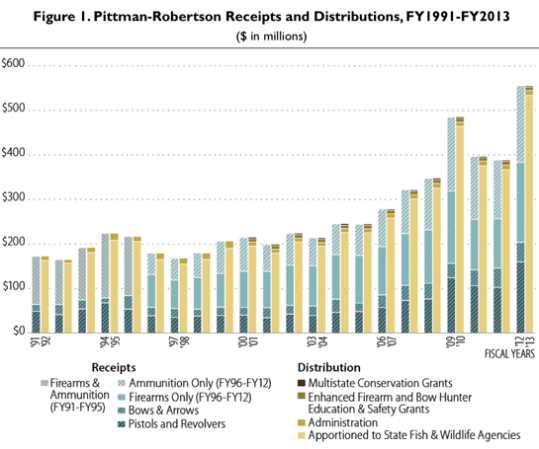Editor’s Note: This is the fourth of a four-part series on Hunting Editor Andrew McKean’s efforts to ditch the national conservation organization banquets and start a more effective local group in his hometown of Glasgow, Montana. | Read part one here. | Part two here | Part three here.
America’s hunters and anglers are a self-congratulatory bunch. At the cast of a fly or the pull of a trigger, we remind anyone who will listen that, through a system of voluntary sacrifice and self-taxation, we brought back the wild turkey, the whitetail deer, the rainbow trout, and the mallard.
We have every reason to pat ourselves—and anyone who buys a hunting or fishing license—on the back. In fact, America’s wildlife restoration movement deserves to be cited as an example of one of the most effective examples of collective action in the history of the world.
It isn’t just license dollars, excise taxes on some sporting goods, and the system of professional wildlife management they fund that gets the credit for bringing back our nation’s critters. An alphabet soup of non-governmental organizations took on the specific task of conserving either imperiled species or the intact habitats they require. These are the national “critter groups” we’ve described elsewhere in this series.
A history of American citizen conservation should devote an entire chapter to these groups, citing not only the yeoman’s work that they’ve done across huge landscapes, but also their ability to create a sense of purpose and connection among their members. These wildlife societies might bring together, over a shared love of ducks and duck hunting, a corporate lawyer from Memphis with a web-foot Cajun from Louisiana. Or a backcountry hunter from Colorado with a plumber from Ohio, both of whom savor their last elk hunts, and dream about their next.
Those dues-paying members are the real resources of critter groups, more valuable to the conservation mission than all the staff biologists and habitat contracts they can accumulate. Members, and the energy and revenue they generate, is historically the fuel in the tank of critter and habitat organizations. But leaks in that tank are widening by the year.
Broken Banquet Model
Last year, Marshall Johnson put on 34 separate fundraising events in his territory of Minnesota, South Dakota, and North Dakota.
“I was strung out,” says Johnson, a regional director for the Mule Deer Foundation. “I doubled revenue from the year before, but I barely had a weekend off from events.”
It’s better this year for Johnson, a veteran of field organizing for conservation groups, because he gave his South Dakota chapters to another RD, but he’ll still be sprinting through the high season of fundraising events this winter. Only, this year, he has relatively few sit-down dinner banquets in his region.
“The banquet model is broken,” Johnson told me, referring to the traditional fixture of conservation funding, a ticketed dinner in which guests tolerate heat-lamp buffets in exchange for the opportunity to win raffled guns and bid on auctioned items. “People just don’t have the time—or can’t find the time—to devote a whole evening to an event. Besides, they seem to have a hard time committing ahead of time, which makes it real hard for volunteers to plan for the number of meals or even how big a venue they need.”
Johnson attributes the decline of banquets to a number of factors well outside the realm of wildlife funding. Families invested in year-round youth sports, an aging base of traditional banquet-goers, a younger generation dominated by both single-parent households and those in which both spouses work long hours, and the replacement of destination socializing with screen time.
The Mule Deer Federation (where, full disclosure, I serve on the national board of directors) isn’t the only outfit struggling with alternatives to traditional fundraising. Nearly every conservation group, whether local or national in scope, is reconsidering how to raise money to accomplish the mission of the organization. So, by the way, are local hospital guilds, volunteer fire departments, and churches, which has created abundant competition in the charity-fundraising space.
In my experience, which includes 15 years as a local chapter president for the National Wild Turkey Federation, and 6 years as the Montana state president for the NWTF, annual banquets have declined in frequency and attendance as participants reconsider the value proposition of paying for forgettable food, enduring screeching PA systems, and shelling out cash for raffle prizes that they don’t really want or need.
Individual Memberships vs. Big Donors
More full disclosure: I’m a banquet nerd. If I don’t love the time and details (and donation wrangling) that goes into them, I do love the camaraderie, energy, and feeling of common purpose that defines a successful dinner, with neighbors laughing and telling lies around tables, hunting buddies sharing beers, the whole room groaning and then cheering when that lucky kid wins another gun. I see that dynamic play out every time we throw a banquet for our local Hi-Line Sportsmen, but I’ve also seen it at every NWTF, Ducks Unlimited, and Mule Deer Federation banquet I ever attended. You just don’t get that shared experience when you write a renewal check for your membership from the solitude of your kitchen table.
But banquets are expensive and labor-intensive. They don’t spontaneously sprout, but instead require the persuasion and constant prodding of an organizer like Johnson who must convince volunteers to put on local events, not just once but year after year. These regional directors are essentially traveling sales folk; their product measured in chapters, memberships, and revenue for the national organization.
Banquets raise funds, sure, but they also deliver a secondary benefit. They are local expressions of national organizations. When they’re done correctly, they can sow a sense of shared purpose, they can help fund local projects (see what happens when they don’t by reviewing Part 1 of this series), and they can help connect volunteers from one part of the country with those in another.
If that fundraising system is broken, or at least stressed, then the most reliable revenue pipeline for national conservation groups needs to be replaced with other ways to raise money. That’s actually happening pretty effectively. You might see your favorite conservation group mailing out sweepstakes offers or peddling incentives to entice you to sign up for multi-year memberships. You might also see more resources at the headquarters level devoted to attracting corporate partners. Wonder why Ducks Unlimited members get so many solicitations to buy insurance from MetLife? The insurance company is a national DU sponsor, helping to fund wetlands restoration, sure, but also happy to have a direct line to a pool of conservation-minded (and underinsured) customers.
Critter groups are also turning to new media to raise funds. Ducks Unlimited reports that in 2018, it raised more than $4 million in online fundraising, and is using Facebook as an important membership recruitment tool.
Changing Conservation Mission
The mission of national organizations is evolving as the conservation needs have changed. When the National Wild Turkey Federation formed in 1973, there were an estimated 1.3 million wild turkeys on the continent, mostly in small, remote pockets. By working with state agencies to restore birds and their habitat, the group helped raise the continental population to 7 million turkeys spread across the landscape. But what now? Its original conservation mission largely fulfilled, the NWTF has pivoted to become a leader in promoting America’s hunting heritage and helping recruit new hunters.
The NWTF has also become one of the leading non-governmental resources for forest health, especially in the Southeast. Similarly, Pheasants Forever has become a leader in upland habitat across the Midwest and Northern Plains, helping agencies and landowners improve soil health and grasslands habitat. That work grows pheasants, but it also helps sustain rural communities and ag-based economies that also benefit ringnecks. Based on its continental habitat priorities, you could make the case that Ducks Unlimited is now as much a water-quality organization as it is a duck-hunting group.
Those changes in focus help explain one of the common critiques of critter groups: that they don’t spend much of their funds on mission. It’s a complicated argument. Most groups claim that a high percentage of revenue goes to “mission achievement,” but most include field staff (including regional directors whose job is to raise funds) in that total. In 2019, for instance, the NWTF reported that “90 percent of every dollar goes to mission,” but its fiscal report showed that only 22 percent of its funds went to conservation activity; the remainder went to education, membership activities, administration and program services and fundraising.
National Mission, Local Impact
As I detailed earlier in this series, the Hi-Line Sportsmen grew out of diminishing interest among a group of volunteers in my town to send local money out of the area to accomplish conservation work elsewhere. It’s a discontent I’ve heard from plenty of readers of this series, but the happy news is that, as critter groups change their missions, local needs are getting higher priority from some national organizations.
One of the best examples is Pheasants Forever’s Youth Mentored Hunts and Women on the Wing programs. Last year, PF hosted more than 2,500 youth mentored hunts, activating local chapters and grassroots volunteers to introduce hunting, dog handling, and the value of functional habitat to a new generation of conservationists.
“At a national level, we are very conscious of the need to recruit and retain new hunters, and we’ve made it a priority on par with habitat improvement,” says Marissa Jensen, Pheasants Forever’s Education & Outreach Program Manager. “But it was relatively easy for us. Our chapters are empowered to make decisions about how they use 100 percent of the funds they raise. Local volunteers make these conservation decisions in their own communities. They buy in to our national priorities, but then do the work on the local level.”
This is one of the enduring benefits of national conservation groups: they deliver scale. While small, independent groups like Hi-Line Sportsmen can make a big difference in small communities, the ability of large organizations to activate their network of local chapters can leverage the impact of the initiative, whether it’s recruiting new hunters or lobbying Congress for habitat funding or raising millions of dollars for wildlife research.
Partly out of necessity, many groups are changing how they pitch their value proposition to and raise money from local communities. While the Mule Deer Foundation is currently reviewing how to refine its mission to attract more members, Johnson and other regional directors are looking beyond the traditional banquet model.
“We’ve done much better with short, non-ticketed events,” he says. “I call them Gun-a-Paloozas. We rent a bar with a grill where people can order food if they want. We sell gun raffle tickets for maybe an hour or two, people socialize and maybe share some beers, and then we end the evening by drawing tickets and giving away a gun every few minutes.”
Compared with banquets, the arrangement is less time and labor intensive for local volunteers. The cost to the MDF is lower, because it doesn’t have to carry the cost of banquet merchandise. And the “Paloozas” generally get great turnout because they’re more spontaneous and don’t require an entry fee or commitment to spend an entire night out. Johnson says the upbeat energy of the events also helps him recruit volunteers.
“People associate the Mule Deer Foundation with having fun, sharing a brew, and winning guns. So, when I come back and ask them to help with a local event, people are much more receptive to me.”
Maybe that’s the main point of conservation. It’s serious, essential work, and given all the habitat, access, and participation problems that confront American wildlife and sportspeople, it’s more critical than ever. But when people come together for the benefit of something bigger than their own interests, even the most sober and difficult work can seem exactly like fun. It helps when you have the chance to win a gun.
If you doubt that, then go to a local conservation banquet, or Palooza. At some point in the evening, an attendee, maybe unsteady from a few drinks but warm with fellowship and purpose, will bid on an item, or buy a gun ticket.
“For the ducks!” he’ll shout, as much to justify his bid as to rally his neighbors. “For the turkeys!” she might yell, or “For the elk.”
“For the Hi-Line!” may not have quite the same ring, but the purpose is the same, whether the group is national or local. So, to all of you who volunteer your time or money for wildlife and the places they live, thank you. You are the real heroes of conservation in this country.

